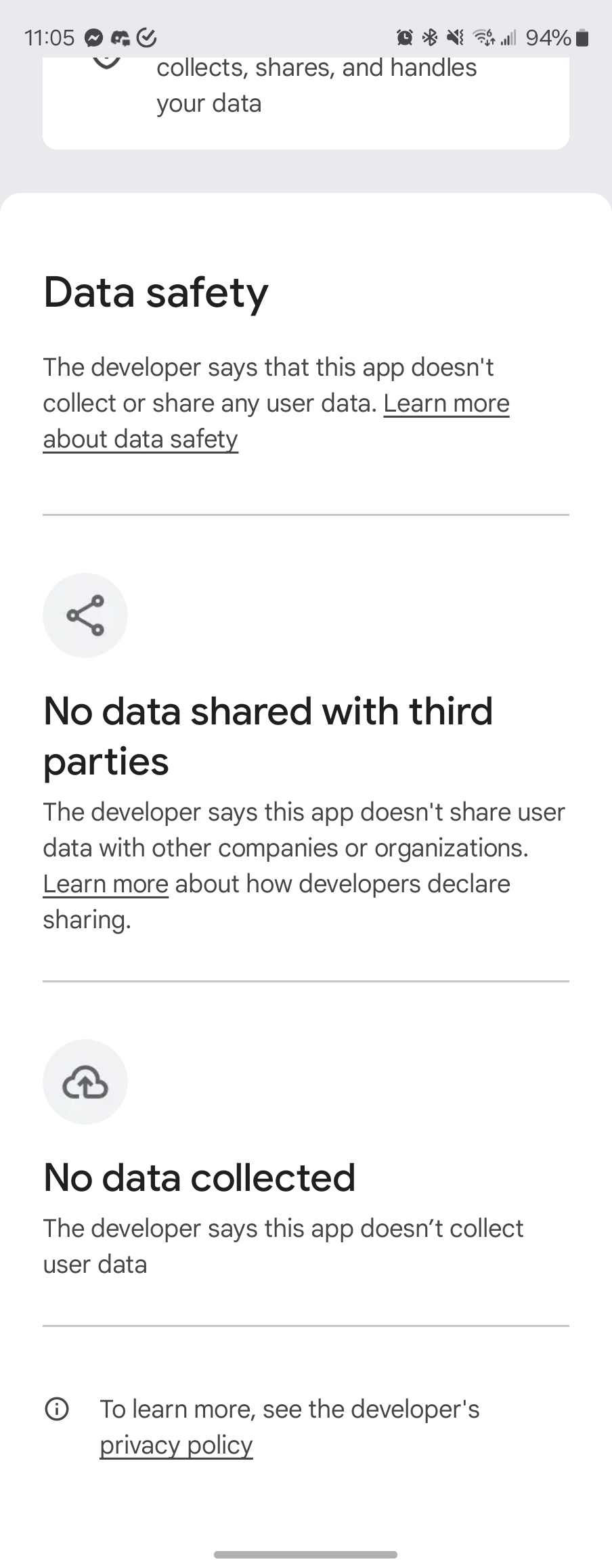So I’m just one dude and 10k a year just on food seems incredibly high. I don’t go out that often, ~$1600 was at restaurants. I’m not really sure what I’m doing wrong while shopping at grocery stores and want to track grocery purchases better. The store I typically go to doesn’t have online receipts to use.
I’m wondering what kind of apps are available for tracking grocery expenditures that Lemmings would recommend? It would be nice to be able to go back and check prices/sizes of things too, so what is being shrinkflated/skimpflated
I hate to say it, but one way to do it is using a spreadsheet. Every time you shop, you create two new columns – the item and it’s individual price, and at the bottom the total.
At the end of the year, you can add up and graph the totals.
That was our approach, with columns for different stores to identify the better price points where we were buying an identical/equivalent item. Turns out Costco tends to have the best pricing for non-perishable items.
Oh and we only had to maintain the list for about 3-6 months to understand pricing in our area.Good luck OP!
Add a column to track how much of it you’ve thrown out as well.
May I interest you in firefly III?
I would focus on it the from a different angle. Instead of tracking grocery spending, I would set a number that you aim to not go over for a given month. Based upon the numbers you provided you spend an average of $700 per month on groceries. If you, for example, aimed to start with reducing your by 50% to $350 per month you would save $4400 yearly. That’s a sizable sum of money that you could put towards a vacation or a buttload of smaller purchases.
As far as how you could go about saving that much, I would advise setting a limit on both how many grocery trips you make and how much you allow yourself to spend on each trip. So lets say you decide on about 4 trips a month (roughly weekly). In that case, spending $80 per trip would safely stay within the budget of $350. There would even be ~$30 leftover for a couple of mini trips for one or a couple items.
To help stay in the budget, it might be helpful to take a small notepad along and log how much each item costs at as soon as you put it in your cart. You can stretch your dollar further by buying the products that tend to be more out of sight and less convenient. The products that are highly visible like the endcaps of aisles and that are at eye level tend to be the more expensive options since they are usually rented by the brands to get the prime attention real estate. Stores with a less than traditional layout, like Aldi, are also a great way to save since they are usually cheaper and let you get more bang for your buck.
Another useful practice might be a simple grocery list. After you write it out but before you go in the store, you could order the items based on how important they are to have. Something like sweets < Potato chips < crackers < fruit < veggies < presliced meat < spreads / oils < bread. If it seems like your running total for the trip won’t cover all that’s on your list then you could forgo some of the less important or more expensive items. When calculating the running total keep in mind that there’s usually a ~10% tax on that will be added to the total. So $70 worth of groceries would end being ~$77 after checkout.
As far as apps, I’ve tried some of them and I found they were too tedious for my taste. Even receipts often obscure what the actually product is your getting with a product shorthand that is illegible. That’s why I have ended up breaking out a smallish notepad for tracking purchases instead of using receipts.
I guess this comment got a little long winded for lemmy, but oh well.
I use the price tags in the store. They show how much each thing costs. If it’s too expensive I don’t buy it. Make potatoes and chicken your reference point. If it’s more expensive think about a substitute. Next trick is that I think what I’m going to cook before I go to store, check what I’m missing and put it on a list. Then I buy things on that list. This helps me not to throw away food.
If you do both things and still spend $10.000 on food you’re only choice is to eat less or eat things you like less which is silly if you can afford it. Tracking each transaction is an interesting hobby but will consume your time and not help you much more than simply being concious about what you buy and not buying things you don’t need.
I’d like something that will take a photo of a supermarket receipt and record every item. I want to be able to, for example, check the price history of my favourite breakfast cereal or a bottle of milk. I’ve got a shoebox of receipts dating back a few years and I’d love to be able to do some kind of price comparison on them but with minimal effort coz I’m lazy.
Yeah, this would be great.
Where do you live? Share a typical grocery list and what you paid for certain items. Do you eat meat? Pre-made meals? How often do you cook?
Get one credit card you only use at the grocery. If you get one with cash back or points you will get money back.
I just got Monarch and it works amazing for tracking everything. Used to use Mint, but they decided to merge to CreditKarma and screw themselves.
deleted by creator
I track all my expenditures with You Need A Budget. If you’re in college, you can get a year free.
Dave Ramsey has his version, EveryDollar. I’ve never used it, but…it’s the same concept.
If you’re just wanting to track grocery expenditures and have that detail of checking historical prices, you might try an AI like ChatGPT to turn a pic of your paper receipt into a spreadsheet, then copy and paste it into Google Sheets.
I’d recommend an alternative to ynab such as Actual Budget or one of the others mentioned in this thread. YNAB is great software but the subscription price of it is getting ridiculous.
I came to plug ynab. It’s not just for groceries, obviously. But by using it, you will accomplish your goal.
I can’t stress enough how good ynab and its system are. It can be hard to wrap your head around, but once you do, it’s a game changer.
There is KitchenOwl and Grocy off of Fdroid if you want.
PaperlessNGX can take pictures of receipts and usually OCR them into a useable list that you can manipulate in a spreadsheet.
Oo that looks workable. Great suggestion! Did find that I can get email reciepts if I do reward program and remember to scan it at checkout. Between those things I can probably build something. Maybe it’ll fill this niche that looks like a number of people would find helpful
I recently tried to find the same thing and came up empty. What worked best (though with noticeable shortcomings) was simply making a spreadsheet and comparing prices I found online for the stores I could think of. What I found is that it takes a lot of time, some places don’t have their prices or even all their items on their websites, and that sometimes you end up spending a little (or a lot) more now in order to save money in the long run.
BUT. I also found that some things are consistently cheaper at certain places, and that if you bother to track individual items over time you can start to paint a pretty clear picture of what stores will have the cheapest items. Like, when it comes to chicken breasts and ground turkey, I’m going to Aldi almost every time. But for canned goods, my local H‑E‑B tends to fare a bit better, and is a good second choice for ground turkey.
Sorry I don’t have any app suggestions, but for comparison that seems at least as much or even higher than what my wife and I spend together on our groceries. It might be worth looking at the types of things you’re buying, like there’s a lot of generics that are made in the same place as the name-brand products and sell for half the price. Also do you end up throwing out a lot of food? Your age matters a lot too, because if you’re in your teens or early 20’s you probably have a voracious appetite which goes away as you get older.
There’s a financial app called Cashew.
Open-source, reasonably priced, works great. Switched after Mint shut down but it’s a big upgrade
Edit: Playstore Link but it’s also on iOS
Cashew
There are at least two different apps. Which one? This one?OK found it.
https://github.com/jameskokoska/Cashew It does have iOS and Android apps available.
They REALLY need to rename. That first link stole their name and they collect and sell your data.
Is it the one on the Google Play Store by Dapper App Developer? I couldn’t find anything on F-Droid :(
 Always nice to see
Always nice to seeYep Dapper
Does it pull data in like Mint did, or do you have to put it in manually? That’s the most important thing to me.
Can they automatically pull data from your bank accounts?
I don’t think so, which sucks altho is prob more secure without
My how our education system has utterly failed the last two or three generations. Personal finances used to be taught in High School economics, including how to track spending. With the tap, swipe and scan payments we have these days, few people even keep a record of their spending other than perhaps the account balance. I use a checkbook program and spreadsheet together to keep track of where my money goes, and reconcile it with my bank statement every month to be sure everything adds up. This does mean I have to get paper receipts when I can’t get a digital one, but living your life means you can’t just float around through life expecting the apps and electronics to keep you on track, you have to do some work.
Part of this request seems to be to track prices and quantities for individual items purchased at the grocery store. I doubt you’re keeping up with that in your checkbook, but an app might be able to.
Still, I do agree that we’re failing kids by not teaching them personal finance skills.










